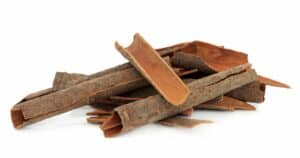Are you tired of using the same old spices in your cooking? Look no further than paprika, a versatile sauce with various flavors, from mild to hot. Whether you want to add color to your dish or enhance its flavor, paprika has got you covered.
Sweet, hot, smoked, or pimentón – the varieties of paprika are endless. Sweet paprika can add a subtle sweetness to a dish, while hot paprika can add a fiery kick. Smoked paprika, on the other hand, adds a distinct smokiness to your words.
And if you’re looking for a traditional Spanish flavor, try pimentón, a type of smoked paprika with a rich flavor.
In this article, we’ll dive deeper into the different varieties of paprika and their uses in various cuisines. From Hungarian to Moroccan to Portuguese cuisine, paprika is a worldwide staple
So, let’s explore the world of paprika and add some much-needed variety to our
Understanding Paprika: Origins and Varieties
Paprika is a
Most paprika sold in grocery stores is simply labeled as “paprika,” but it may have origins in Hungary, California, or South America. There are different types of paprika, such as Hungarian, Spanish, smoked, and sweet, each with its unique flavor profile.
Hungarian Paprika:
- Grown in Hungary and made from a specific variety of pepper
- Varies in heat level, ranging from mild to hot
- Has a bright red color and a robust, slightly sweet flavor
- Used in dishes like goulash and paprikash
Spanish Paprika:
- Also known as Pimentón
- Made from dried and smoked pepper
- Comes in three varieties: sweet, bittersweet, and hot
- Used in dishes like chorizo and paella
Smoked Paprika:
- Made by drying peppers over oak wood fires
- Comes in sweet, bittersweet, and hot varieties
- Has a smoky flavor and is commonly used in Spanish cuisine
Sweet Paprika:
- Made from sweet peppers and has a mild, sweet flavor
- Used for color more than flavor
- Often used as a garnish for deviled eggs, potato salad, and more
From Sweet to Spicy: Different Levels of Heat in Paprika
Paprika can range from sweet to spicy, depending on the variety. Hungarian paprika is generally hotter than Spanish paprika. Spanish paprika can be dulce (sweet and mild) or agridulce (bittersweet and medium heat).
Sweet paprika is mildest in flavor and color than other varieties. It is made from benign pepper varieties, such as bell peppers or pimentos, and has a lower heat. Sweet paprika is best suited for adding a mild flavor and vibrant red color to dishes.
Smoked paprika has a smoky flavor and aroma from being dried over wood fires. It is made by smoking sweet or hot peppers before grinding them into a fine powder. Smoked paprika can give dishes a subtle, savory flavor that complements grilled meats, stews, and soups.
Hot paprika has a higher capsaicin level, which gives it its spiciness. It is made from more desirable chili pepper varieties, such as cayenne, Thai bird’s eye, or habanero. Hot paprika adds a fiery kick to dishes, from meats to sauces and dips. However, it is essential to use it sparingly to prevent overpowering the plate.
Unleashing the Flavor: Uses of Paprika in Cooking
Paprika is a flavor powerhouse that adds depth and complexity to your cooking. This versatile
However, it’s important to remember that not all paprikas are created equal. In this article, we will explore the different types of paprika and how they are best used in cooking.
Here are some ways to unleash the flavor of paprika in your cooking:
- Use sweet paprika in creamy sauces, like alfredo or béchamel, for a subtle smoky flavor and rich color.
- Add hot paprika to your favorite chili recipe for a spicy kick.
- Mix smoked paprika with olive oil and rub it on chicken, fish, or meat before grilling or roasting.
- Sprinkle sweet paprika on deviled eggs for a colorful and flavorful twist.
- Use smoked paprika in hummus for a unique and tasty dip.
- Mix hot paprika with ranch dressing for a fiery dip for veggies or fries.
Using Smoked Paprika: Adding Depth and Complexity to Your Dishes
Using smoked paprika is a surefire way to add depth and complexity to your dishes! Smoked paprika is made from smoking peppers over oak wood and has a rich, smoky flavor that pairs exceptionally well with meaty dishes like chicken, beef, and fish.
Whether you’re looking to add more flavor to your pasta sauce, chili, or sautéed veggies, smoked paprika is the perfect ingredient to help elevate the flavor profile of any dish.
To add some smoky richness to your next meal, consider using smoked paprika in any of the following ways:
- As a rub for grilled or roasted meats like chicken or beef
- Sprinkled over sautéed or roasted veggies like potatoes or carrots
- Added to slow-cooked stews or soups for an extra layer of flavor
In addition to its delicious taste, smoked paprika has numerous health benefits. For example, it contains a high amount of vitamin A, essential for maintaining healthy eyesight, skin, and immune function. Additionally, it has anti-inflammatory properties and can help lower blood sugar levels.
Cooking with Paprika Around the World: Hungarian, Moroccan, and Portuguese Cuisine
Paprika comes in two standard types in Hungary; sweet and hot, with the latter being the most prevalent. Hungarian paprika varies in heat intensity and color, from light to dark red to brown. Some of the popular paprika dishes in Hungary include:
- Lecsó: A one-pot meal with paprika, onion, pepper, and tomato.
- Kaposztás tészta: A traditional Hungarian pasta dish served with sautéed cabbage and paprika.
- Paprikás csirke: The chicken is simmered in a paprika-based sauce until it reaches a tender texture.
In Portuguese cuisine, paprika is an ingredient in many dishes, such as chouriço sausage and bacalhau (salt cod). They also use it to flavor stews, soups, and meat dishes. Moreover, it is a crucial ingredient in Arroz de tamborim, a traditional Portuguese rice dish with monkfish and paprika.
Moroccan cuisine is famous for its use of spices, including paprika. They also use paprika to season couscous and kebabs. Due to its robust flavor, paprika is an essential ingredient in Moroccan cuisine. The sauce is used in several staple dishes like tagine and harira soup.
Paprika Substitute: When Paprika is Out of Reach
If you’re out of paprika, don’t worry! You can use many substitutes to achieve the desired taste and flavor. Some of these substitutes can enhance the like to create an even richer flavor than regular paprika. Here are some of the reserves you can use:
- Smoked paprika has a smoky flavor, making it a perfect substitute for the regular one.
- Hungarian sweet paprika – Its mild flavor makes it a suitable substitute for regular paprika.
- Ancho chile powder – It has a mild, fruity taste and is made by grinding dried poblano chilies.
- Cayenne pepper powder has a spicy flavor and can substitute for taste and color.
- Chili powder – It combines different spices and can be used as a substitute, but it may change the dish’s taste.
- Aleppo chili powder – It has a mild, fruity flavor and can be used as a substitute for paprika.
Adjust the amount to achieve the desired taste when using any of these substitutes.
It’s worth noting that some substitutes may work better in specific dishes than others, depending on the recipe’s requirements or the type of cuisine it belongs to.





